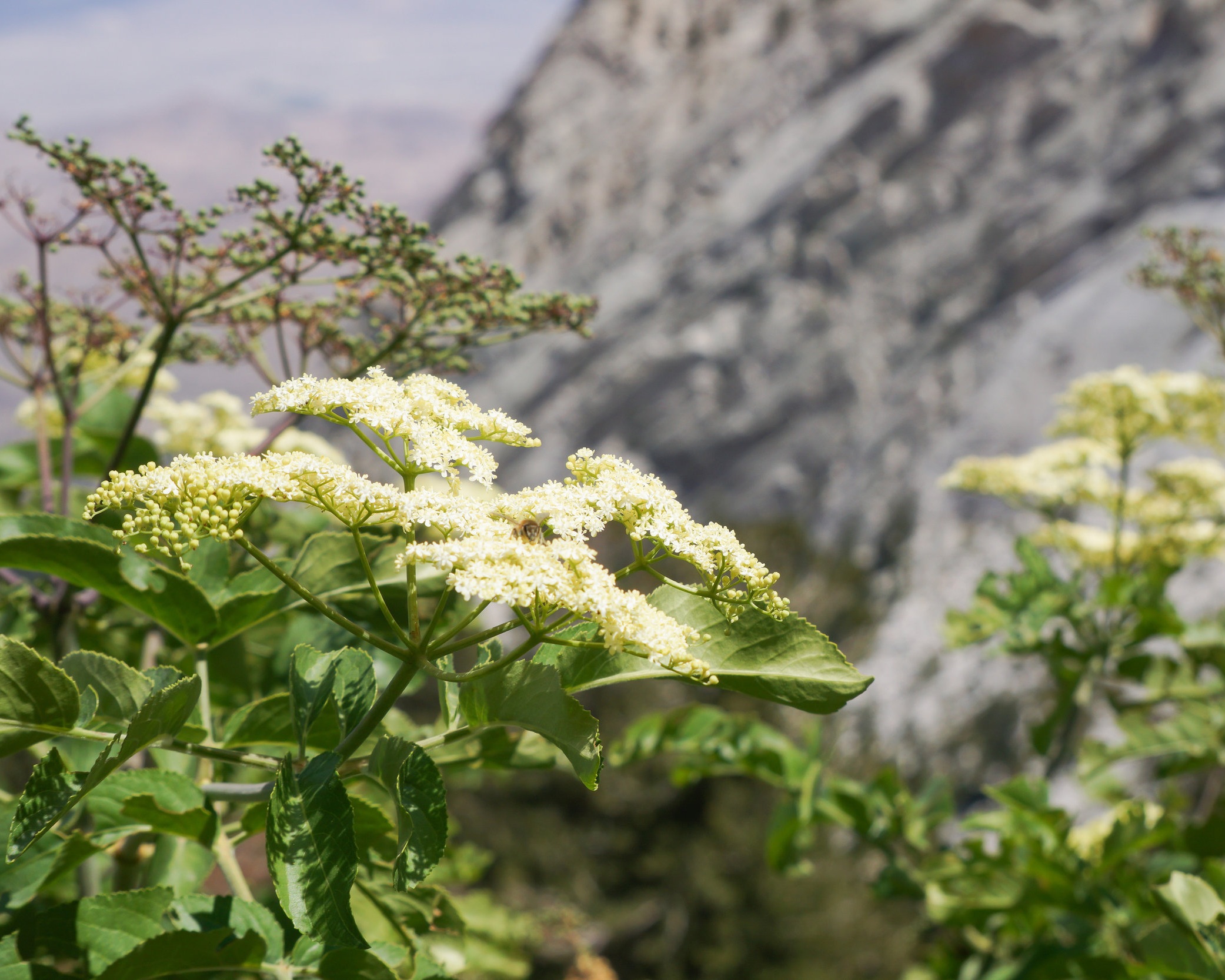Sambucus nigra ssp. cerulea (Blue elderberry)
Formerly S. caerulea. Deciduous short-lived aromatic shrub or small tree up to 20 ft. tall or more with purple-black berries and white to cream flowers, blooming March to September. Adapted to a wide variety of well-drained soils along streambanks, riverbanks, riparian areas and moist sites within drier brush and forest communities; up to 10,000 ft. elevation. Often found with quaking aspen, alders, serviceberries (Amelanchier spp.), Chokecherry (Prunus virginiana), roses (Rosa spp.), gooseberries (Ribes spp.) and big sagebrush (Artemisia tridentata). Sprouts vigorously from the crown after wildfire. Good palatability to livestock and wildlife and is a more important deer browse than Red elderberry (S. racemosa). Persistent and may recover well from heavy browsing. Provides cover and nesting for wildlife, and berries feed numerous birds and small mammals. Native cavity nesting bees live inside the pithy stems of old dried growth. Hummingbirds visit flowers for nectar.
DISTRIBUTION / ADAPTATION
INFORMATION & ATTRIBUTES
Family: Caprifoliaceae
Duration: Perennial
Growth Habit: Shrub/tree
Native Status: Native
Growth Form: Multiple stem
Mature Height: 23 ft.
Bloom Color: White
Fruit/Seed Color: Black
Bloom Period: Spring
Annual Precipitation: 10-60 in.
Drought Tolerance: High
Shade Tolerance: Intermediate
Elevation: up to 9,000 ft.
Fire Resistance: No
Fire Tolerance: Medium
Nitrogen Fixation: None
SOIL ADAPTATION
Coarse Texture: Yes
Medium Texture: Yes
Fine Texture: No
Salinity Tolerance: None
CaCO3 Tolerance: Medium
pH Range: 4.6-7.5
SEEDING NOTES
Seeds per Pound: 197,500
Seeding Rate: PLS lbs/acre
Season: Fall
Days to Germination:
VARIETIES & LOCAL ACCESSIONS
None



